Residential/home elevator travel speed and energy efficiency
tcjohnsson
9 years ago
Featured Answer
Sort by:Oldest
Comments (9)
tcjohnsson
9 years agolookintomyeyes83
9 years agoRelated Discussions
Energy Efficient
Comments (26)calliope & christy, that's the whole crux of the problem realy, the indoctrination into badly designed homes is fairly complete, and when you consider that up to 75% of those homes are also built on the wrong aspect and take orientation of the home into that there are not going to be very many homes that you can buy out of the new or used home lots that will be able to be run with noticable efficiencies. but on the other hand a lot of people do get to build their own home from scratch but they always or nearly always follow the indoctrinated model with some "we love that" variation. need to keep the heart out of these decisions and use the head a whole lot more, and that means oodles of latteral thinking, thinking outside the "box/square" and working outside your comfort zones. and the squares we are in and the comfort zones around us are all indoctrinated, a fairly hard mold to break most of the time. and the current climate in the home design area won't change while we home buyers keep buying what "they" dish out. we don't need macmansions we need affordable comfortable homes, at the time we built ours it cost around $50,000AUD the nearest affordable steel plan home (macmansion style no options away from that style that is all they want to build for us) then was around $80,000AUD, that is a big saving for a young family well for any family, and then the home was so much cheaper to run. it had lots of benefits to suit the local conditions ie.,. it was termite resistant in its own right without the use of any chemicals or barriers, it was also fire resistant ad it had almost no combustable material only furnishings, it was Cyclone proof beyond the minimum standard of normal homes, and the list goes on. Even the plumbing was either exposed or easily got at for repairing or adding to, all modern homes have hidden plumbing so when a fault occurs or addition is needed it requires in a lot of cases the removal of wall sections and alot of mess to complete the task. 'christy', in your travels abd wanderings from this home to that home, have you ever noticed in like climates how one home may be more comfy that anotehr even if someone else yo know through association happens to be living in it, these differences will be there, and they aren't differences by design they are accidental as a builder/planner may have given some homes better aspect and design lent itself to better orientation. we see here our home is that bit more comfy than the one our daughter rents a couple of kilometers away, our young neighbours over the road can't figure why our living area is heaps more user friendly on the comfort side than what his is. the best tools are a compass, and powers of observation with good analytical skills, and being able to figure the suns track over the season. when we buy a home before we step through the door the compass comes out, and if it is the wrong aspect we don't go any further, drives real estate people crazy, but deep down they know we are right they just want everyone to be like the lemmings and just buy a place because it looks pretty or has a pretty view whatever. when people buy cars and fridges etc.,. they are more astute, yet the biggest thing they buy gets cursory attention to detail. when you look at a concept if the first words/thought are won't/can't/yuk then you have locked yourself into the box, make your thinking why/what/how. thanks for the great chat hey? len...See MoreEnergy Efficiency - Don't Forget This!
Comments (18)Hey Oberon!! can you drop me an email?? what I would like to see is homes designed with the ductwork in the conditioned space, then duct leakage would be to the interior of the house and not the exterior. there are so many real world problems with duct leakage/return leakage and so many oversized units to make up for the leakage. HO gets 5 tons on 2500 sq ft home..if house leakage were reduced and duct and return leakage reduced to 5% then unit is oversized... one of the biggest misnomers is that a bigger unit is better. what really happens is that unit short cycles costs more to use per month, doesn't run long enough to remove humdidty..and because of all the stops and starts has a shortened life. high efficient hvac is only as good as the install. in my latest training class they did a calculation that blew me away... I've seen a lot of home with R-38 attic insulation, with attic staircase in the conditioned space. so when uninsulated attic staircase is included with little to no R-value the overall attic insulation is reduced to R-25...now throw a bunch of IC rated recessed cans (not air tight ICAT) one equals one sq ft of uninsulated attic..what do you have now??? insulation that can't perform because of air movement through the insulation.. efficiency always costs more upfront, but it is the length of time it takes to pay back that cost that makes one option preferable to another. green is 80% energy efficiency and 20% everything else (joe lstriburek of buildingscience.com) I would like to see an energy efficiency forum here....See MoreClean, reliable, and energy efficient... recommendations?
Comments (15)While burning natural gas (i.e., methane, a greenhouse gas) does produce less carbon dioxide than burning coal, it's been argued that during the production and distribution of natural gas, more carbon emissions are released into the environment, overall, than coal. Needless to say, the validity of the claims behind the eco-friendliness of natural gas, hydraulic fracturing ("fracking"), and fossil fuels in general, remain highly controversial. That said, in more practical terms, residential energy rates for natural gas will typically be significantly lower than for electricity (however it's been generated). In major metropolitan areas such as Los Angeles, this cost difference is huge, making the choice of a gas dryer an easy decision (providing you have gas in your home, and are able to properly vent the dryer). For whatever reason, so-called, "Energy Guides" (the ubiquitous yellow stickers found on most appliances) aren't published for either gas or electric dryers, making direct comparions near-impossible. Modern front-loading washers are pretty miserly on both electricity and water usage, and the minute differences in efficiencies between brands should be negligible. This post was edited by studio460 on Tue, Jul 16, 13 at 6:45...See MoreEnergy efficiency and your house...
Comments (16)I'm building in SW FL and right now my windows are in but not my doors. No insulation yet. Our house has energy efficient, hurricane rated windows and the roof decks will have icynene blown in insulation. We of course will have insulation in the rest of the house and all openings will be sealed. Our AC unit is a variable speed unit and we'll have 3 zones. All lighting will be LED. First floor of the house is block construction and second floor is 2 x 6 wood construction with Hardie siding over it. First floor will be stucco. However like Virgil and JDS alluded to, I think the best things we did have nothing to do with modern efficiencies, but in old fashioned siting of the house, etc. We are building a U shaped house that is only 1 room deep on all sides of the U and we are already seeing the benefits. We sited the house with a north/south orientation with the backyard facing south. All our eaves are 32" wide and we have a 9' deep lanai on the back of the house. Ceilings on the first floor are 10' high. Because the rooms are only one room deep, it allows for windows on at least two sides in every room. My DH's office, the kitchen/dining room, the great room, the guest bedroom and my studio all allow for cross breezes and even the other day when it was 94 degrees with almost 70% humidity, those rooms with the cross ventilation were quite bearable with the windows open. While our master bedroom has windows on both the east and south walls, only the window and door on the east wall open. I purposely left off windows on the west wall, to try and keep the bedroom cooler. Being that we're only in the bedroom to sleep, I don't see the lack of extra windows as a problem. Especially since because of my bad allergies, we never sleep with the windows open at night. Right now there is almost no vegetation around but I imagine that once we plant trees, that too will help with the heating/cooling of the house....See Moreweedyacres
9 years agoUser
9 years agotcjohnsson
9 years agoUser
9 years agotcjohnsson
9 years agotcjohnsson
9 years ago
Related Stories
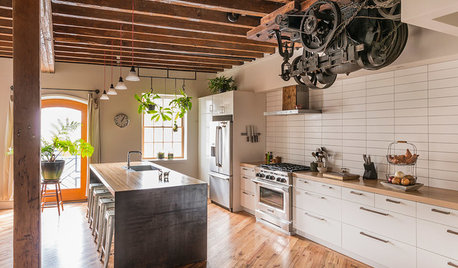
GREEN BUILDINGHouzz Tour: Pickle Factory Now an Energy-Wise Live-Work Space
A charming but poorly insulated 1880s Philadelphia commercial building becomes a spacious energy-efficient home and studio
Full Story
CONTRACTOR TIPSBuilding Permits: What to Know About Green Building and Energy Codes
In Part 4 of our series examining the residential permit process, we review typical green building and energy code requirements
Full Story
GREEN BUILDINGHouzz Tour: See a Concrete House With a $0 Energy Bill
Passive House principles and universal design elements result in a home that’ll work efficiently for the long haul
Full Story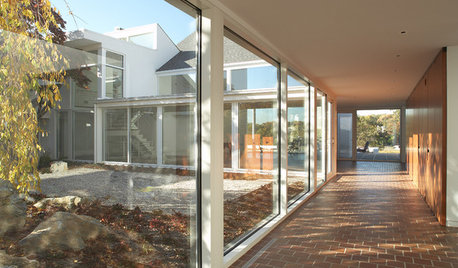
GREAT HOME PROJECTSUpdate Your Windows for Good Looks, Efficiency and a Better View
Great home project: Replace your windows for enhanced style and function. Learn the types, materials and relative costs here
Full Story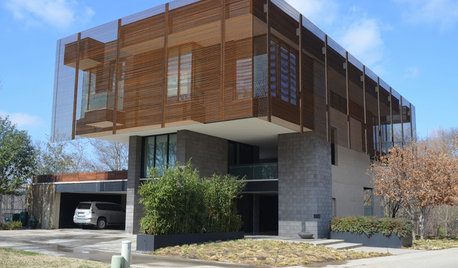
HOUZZ TOURSMy Houzz: A Modern Approach to Efficient Living in Dallas
Energy efficiency, water conservation and resilient materials are key to this home in a Texas development
Full Story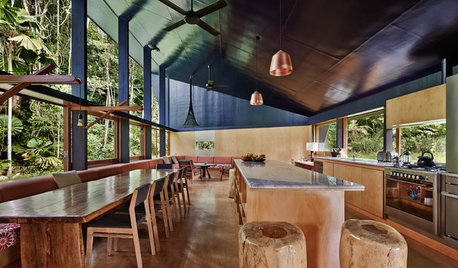
HOUZZ TOURSWorld of Design: 9 Energy-Smart Australian Homes
With their innovative features and diverse surroundings, these 9 award-winning homes have struck gold on the Aussie design stage
Full Story
CITY GUIDESHouzz Travel Guide: Atlanta for Design Lovers
You'll find world-class museums, restaurants, hotels and shops in Georgia's woodsy, welcoming and charming capital
Full Story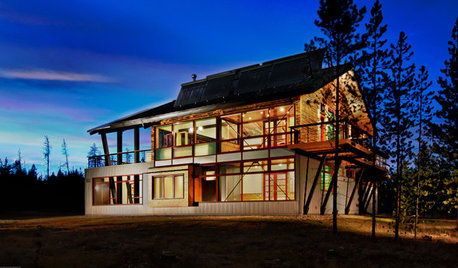
GREEN BUILDINGZero Net Energy: A Hardworking-House Term to Know
Homes that consume only as much energy as they produce by renewable means are a goal for builders. Learn what ZNE means for you
Full Story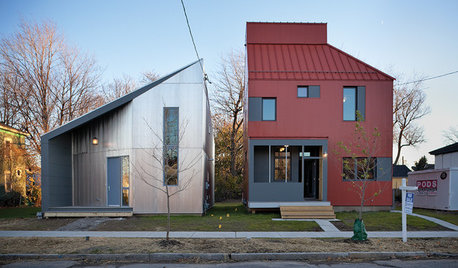
ARCHITECTUREEnergy-Saving Ideas From 3 Affordable Green-Built Houses
Get lessons in budget-friendly green building from design competition winners in New York state
Full Story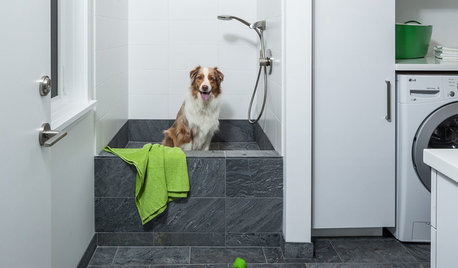
LAUNDRY ROOMSYour Guide to a Beautiful, Efficient Laundry Room
Whether you’re renovating or you just need a fresh approach to the wash-dry-fold cycle, here’s how to make laundry day easier — and even fun
Full Story





Oaktown